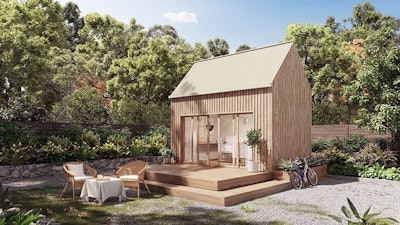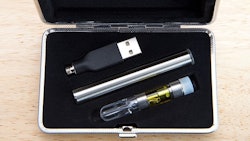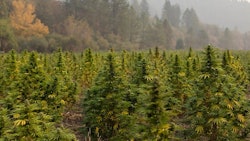
Coexist Build, a Pennsylvania-based architecture firm, has partnered with Alvernia University in Reading for a two-year study to examine the life cycle of hemp-derived building materials.
The research, funded by a Specialty Crop Block Grant from the Pennsylvania Department of Agriculture, will track the carbon footprint of a hemp-based building project by measuring data from hemp farming methods all the way through constructing one of Coexist’s 140-square-foot Traveler structures.
“The purpose of the grant is to conduct a full life cycle assessment of all the materials that are being used for the structure,” Drew Oberholtzer, co-founder and partner of Coexist, told Hemp Grower. “That includes the hemp log that we manufacture in Pennsylvania, hemp insulation that’s manufactured in Quebec, and then the timber frame—everything from going into the forest, cutting down the tree—that entire process—so that we know how much carbon each material embodies.”
Coexist will provide its Traveler kit to two Alvernia University students, Ethan LaVerdure and Alex Kabrich, who, under the supervision of Assistant Professor of Leadership Studies and Health Care Science Dr. Alicia Sprow, will build the model at Alvernia’s Bog Turtle Creek Farm in Kenhorst.
The Traveler, which is a cabin made from hempcrete, will serve as a temporary structure on the university’s organic farm.
LaVerdure and Kabrich will monitor data points not only during the production of the hemp and the build-out of the Traveler, but will also track indoor air quality and energy requirements for maintaining a 68-degree temperature within the structure, Oberholtzer said. The study will run for two years.
“We’re going to look at sourcing material locally and regionally, and then also look at hemp block,” Oberholtzer said. “If we import it from France, for example, how much more carbon [will] that block [embody] compared to if it’s all locally sourced?”
Coexist will support and guide LaVerdure and Kabrich throughout the project, Oberholtzer said, and ultimately, he hopes the study will provide a better understanding of how to apply carbon credits to hemp-based buildings.
“I think that [with] a lot of the natural buildings, and specifically hemp buildings, there’s a lot of anecdotal evidence out there with people who say it’s great for the environment [and] it performs really well, … but there isn’t very much data, at least that’s been done in the U.S., to back all those claims up,” he said. “This is a way to create a case study and a data set so that we can start backing up some of those claims and better understand, is hempcrete, for example, really a carbon-negative material, even if you source the raw material from France? And how much more carbon negative is it if you grow … and process everything within 90 miles of where you’re building?"

























